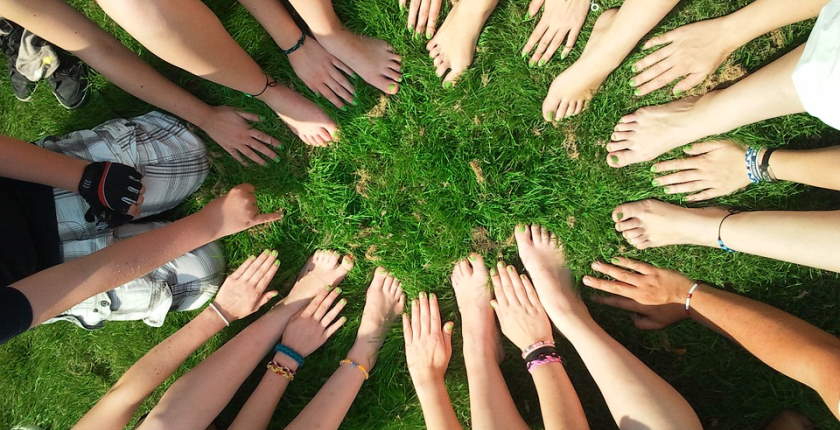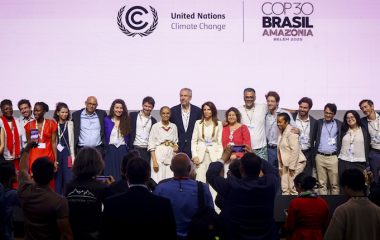
Photo: Henning Westerkamp from Pixabay
A growing number of people around the world are concerned about how mankind treats nature. They are changing their behavior, and demanding stronger action to protect the planet, according to the latest report on biodiversity, confirming that individuals are realizing they could be a part of a problem or a part of the solution.
We’re part of the solution – the slogan chosen for marking this year’s International Day for Biological Diversity, was chosen by the Secretariat of the Convention on Biological Diversity. It wanted it to be a continuation of the momentum that was generated last year under the theme “Our solutions are in nature”, which served as a reminder that biodiversity is the answer to several sustainable development challenges.
From nature-based solutions to climate, health issues, food and water security, and sustainable livelihoods, biodiversity is the foundation upon which we can build back better, the secretariat said.
Without biodiversity, there is no future for humanity
Two facts picture the situation in the planet the best way – 1 million species, out of an estimated total of 8 million, face extinction – many within decades. Since 1970, mammal, bird, fish, amphibian and reptile populations have seen an alarming decrease in size of 68% on average.
And it is the right time to repeat once again: “Without biodiversity, there is no future for humanity”, said David Macdonald, Oxford University Professor of Wildlife Conservation.
It seems that people around the world are slowly coming to their senses. But the question is if it will be enough and whether it is already late.
A new era of change
Public interest in nature, and concerns for it, have risen markedly (16%) in the past five years and continue to grow during the COVID-19 pandemic. A WWF-commissioned document by the Economist Intelligence Unit shows we are entering a new era of change.
The most dramatic growth in engagement and awareness has occurred in Asia, most notably India (190%), Pakistan (88%) and Indonesia (53%). The shift in public sentiment reflects a hard reality, as people in emerging markets are most likely to experience the devastating impact of the loss of nature, the report called An Eco-wakening underlines.
Consumers are changing their habits
The number of nature-loss conversations has grown, as seen in the 65% increase in Twitter mentions since 2016. Major influencers around the world—including political figures, celebrities and religious leaders—are using their platforms to amplify nature issues, with messages reaching a combined audience of almost 1 billion people worldwide.
Consumers are changing their behavior, with searches for sustainable goods increasing globally by 71% since 2016. Corporations are responding, particularly in the cosmetics, pharmaceutical, fashion and food sectors.
Public demand for action is rapidly growing through protests, petitions and campaign donations. Between 2016 and 2018, global news media coverage of nature-based protests grew by a steady 7%. Between 2018 and 2019, however, coverage jumped by a whopping 103%, driven by protest movements such as Extinction Rebellion, the study finds.
World has fallen far short of its commitments on the quality of protected and conserved areas

The international community has made major progress towards the global target on protected and conserved area coverage, but has fallen far short of its commitments on the quality of the areas, according to a new report from the UN Environment Programme World Conservation Monitoring Centre (UNEP-WCMC) and the International Union for Conservation of Nature (IUCN).
The latest edition of the biennial Protected Planet Report is the final report card on Aichi Target 11 – the global 10-year goal for protected and conserved areas.
The Aichi Target 11 includes protecting at least 17% of land and inland waters and 10% of the marine environment. Today, 22.5 million square kilometers (16.64%) of land and inland water ecosystems and 28.1 million square kilometers (7.74%) of coastal waters and the ocean are within documented protected and conserved areas, an increase of over 21 million (42% of the current coverage) since 2010, the update reveals.
Protected and conserved areas need to be effectively managed if they are to realize their many benefits
“Designating and accounting for more protected and conserved areas is insufficient; they need to be effectively managed and equitably governed if they are to realize their many benefits at local and global scales and secure a better future for people and planet,” UNEP-WCMC’s Director Neville Ash stated.
The post-2020 global biodiversity framework is due to be agreed upon at the UN Biodiversity Conference (CBD COP15) in Kunming, China, in October.
“We now call for parties at the UN Biodiversity Conference in Kunming to set an ambitious target that will ensure protected area coverage of 30% of land, freshwater and ocean by 2030 – and these areas must be placed optimally to protect the diversity of life on Earth and be effectively managed and equitably governed,” IUCN’s Director General Bruno Oberle asserted.


















Be the first one to comment on this article.